|
Displaying items by tag: united states
The U.S. has returned nine stolen 18th-century paintings by Mexican artist Miguel Cabrera to the government of Peru.
Manhattan U.S. Attorney Preet Bharara says the works were stolen from a church in Lima in 2008. He says they were smuggled out of Peru to be trafficked on the international art market.
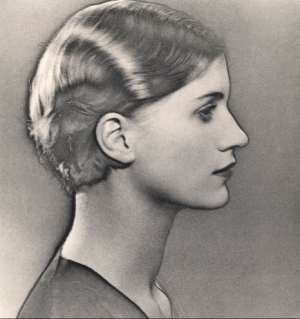
Man Ray Portraits opens today, February 7, 2013 at the National Portrait Gallery in London. The first major Man Ray (1890-1976) exhibition to focus on his portraits, the show presents over 150 vintage prints and important works from international museums as well as private collections. A number of the photographs on view are on loan from the Man Ray Trust Archive. Taken between 1916 and 1968 in both Paris and the United States, many of the works have not been exhibited in the UK until now.
Born Emmanuel Radnitzky in Philadelphia, Man Ray spent most of his career in Paris. He made significant contributions to the Dada and Surrealist art movements and worked in a variety of media, but became best known for his avant-garde photography as well as his fashion and portrait work. Man Ray was keen on experimentation, which led to the production of camera-less Rayographs. With the help of fellow photographer, Lee Miller (1907-1977), who was also Man Ray’s muse and lover, he invented solarisation, a technique that involves recording an image on a negative or on a photographic print, reversing the image’s tone so that dark areas appear light and vice versa.
Arranged chronologically, the exhibition features Man Ray’s portraits of artists, friends, celebrities, and lovers including Miller, Marcel Duchamp (1887-1968), Pablo Picasso (1881-1973), Kiki de Montparnasse (1901-1953), and Catherine Deneuve (b. 1943). Man Ray Portraits will be on view through May 27, 2013.
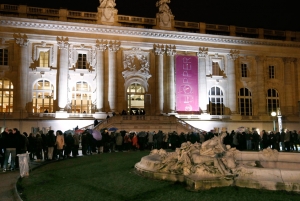
An Edward Hopper (1882-1967) retrospective, which was on view from October 10, 2012 to February 3, 2013 at the Grand Palais in Paris, welcomed a surprising number of visitors during its run. A total of 784,269 patrons visited the exhibition in less than four months, surpassing a blockbuster exhibition featuring the work of long-time Paris resident Pablo Picasso (1881-1973), which ran from 2008-2009 at the same French institution.
To accommodate the high number of visitors, the museum stayed opened around the clock during the show’s final weekend. 48,000 people visited the Grand Palais to catch a final glimpse of the Hopper show, including Jill Biden, the wife of US Vice President, Joe Biden.
The exhibition’s popularity came as somewhat of a surprise to museum officials as the American realist painter and printmaker has never drawn such a crowd in the United States. While he came close, Hopper was unable to surpass the popularity of the 2010-2011 Claude Monet (1840-1926) retrospective, which saw 913,064 visitors.
Hopper, who didn’t sell his first painting until he was 40, has grown considerably in popularity since his death at 85. Wildly successful exhibitions in Madrid, London, Milan, and Rome, which took place before Hopper’s show at the Grand Palais are a testament to the artist’s continued relevance.
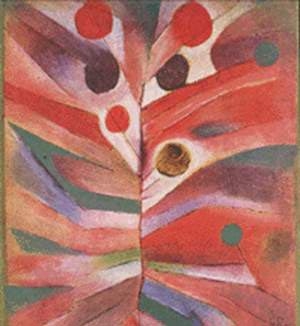
The heirs of Alfred Flechtheim, a prominent Jewish art dealer who fled Nazi Germany during World War II, are urging the German state of North-Rhine Westphalia to return artworks belonging to their relative. The paintings in question, which are by Paul Klee (1879-1940) and Juan Gris (1887-1927), are currently part of the Kunstsammlung Nordhein-Westfalen’s collection in Dusseldorf.
Before the perils of World War II took hold, Flechtheim was an established art dealer in Europe, representing a variety of well-known artists including Klee, Max Beckmann (1884-1950), and a number of French Cubists. Flechtheim ran galleries in Dusseldorf and Berlin, organized many exhibitions, and founded an art magazine. However, Flechtheim’s high standing in the art world made him an easy target for the Nazis. He fled Germany in 1933 shortly after a stream of hateful articles ran in the Nazi press. Flechtheim escaped to Zurich, then Paris before settling in London. After his getaway, Flechtheim’s Dusseldorf gallery was seized and turned over to his former employee Alex Voemel, a Nazi. Flechtheim’s gallery in Berlin was liquidated and his collection, which included works by Pierre-Auguste Renoir (1841-1919), Wassily Kandinsky (1866-1944), Fernand Leger (1881-1955), Georges Braque (1882-1963), and Henri Matisse (1869-1954), was sold.
Mike Hulton, Flechtheim’s great-nephew, claims that Klee’s Feather Plant (1919) and Gris’ Still Life (Violin and Inkwell) (1913) were part of Flechtheim’s private collection and sold under duress for well below their value when he fled Germany. The Kunstsammlung Nordhein-Westfalen does not believe there is enough evidence to support Hulton’s claim. In addition, owners of archives that could help in the case are refusing to let provenance researchers access their information, bringing the dispute to a standstill. Officials from the Kunstsammlung Nordhein-Westfalen assert that if it was proven that Flechtheim was forced to sell the works by Gris and Klee or that he received little to no money for them, that they would part with the paintings, but the current evidence is inconsequential.
Flechtheim’s heirs are currently pursuing restitution for over 100 paintings in museums in the United States, France, Germany, and other European countries.
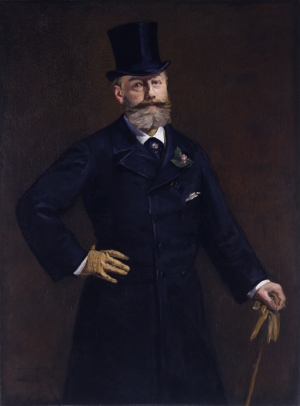
Manet: Portraying Life opens on January 26, 2013 at the Royal Academy of Arts in London. The first exhibition to focus solely on French Impressionist Edouard Manet’s (1832-1883) portraits, Portraying Life has already sold more advanced tickets than the museum’s blockbuster Vincent van Gogh (1853-1890) exhibition in 2010. Certain timed ticket entrances have sold out entirely.
The show, which took six years to organize, spans Manet’s entire career and features works from Europe, Asia, and the United States. Portraying Life is comprised of 50 paintings and a few pastels and includes portraits of Manet’s favorite sitters such as his wife, Suzanne Leenhoff (1829-1906), and luminaries from the time period including Antonin Proust (1832-1905) and Émile Zola (1840-1902). Manet, who often painted family, friends, and important political as well as artistic figures, invigorated scenes of everyday life with his modern and progressive approach to portraiture.
While Portraying Manet is expected to be a hit show, there has been a hiccup in plans. London’s snowy weather has left one painting stranded in Brazil’s São Paulo airport; the portrait of Mademoiselle Marie Lefébure is awaiting flight clearance before it can be exhibited at the Royal Academy. Sadly, the painting was not present at the press preview on January 22, 2013, which included VIP guests, patrons, and sponsors. Officials hope the work will arrive in time for exhibition’s public opening on Saturday.
Manet: Portraying Life will be on view through April 14, 2013.

On January 21, 2013, the Cleveland Museum of Art opened Gallery One, an interactive gallery that brings together art and technology to enhance as well as personalize each museum visitor’s experience. Gallery One features the largest multi-touch screen in the United States, which displays images of over 3,500 objects from the institution’s permanent collection. Known as the Collection Wall, the touchscreen spans 40 feet and helps patrons create their own tactile tour of the museum while rotating works according to theme, time period, and technique.
Gallery One, which includes works by Pablo Picasso (1881-1973), Auguste Rodin (1840-1917), and Chuck Close (b. 1940), employs different hands-on activities to engage visitors using the power of technology. For example, one game asks viewers to recreate the poses of sculptures in the museum’s collection; the ArtLens ipad application illustrates how works of art were made, where they came from, and what inspired their creation. The ArtLens application uses image recognition software and allows visitors to scan objects and access additional multimedia content such as audio tours and educational information for up to 9 hours after their visit.
David Franklin, the Cleveland Museum’s Sarah S. and Alexander M. Cutler Director, said, “Gallery One offers an unparalleled experience for visitors of all ages. The space connects art and people, art and ideas, and people with people…we are especially proud to lead the way internationally in using technology to enhance and customize the art museum experience.”
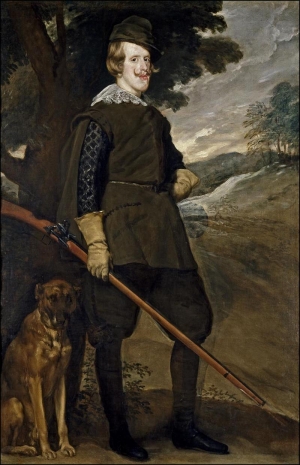
Opening on Sunday, December 16 at the Museum of Fine Arts, Houston, Portrait of Spain: Masterpieces from the Prado, will present over 100 masterpieces from one of the world’s most renowned collections of European paintings. Spanning from the 16th century through the 19th century, the exhibit explores the evolution of painting in Spain through the works of artists such as Francisco de Goya (1746-1828), El Greco (1541-1614), and Diego Velázquez (1599-1660). There will also be works on view by non-Spanish artists who influenced the country’s artistic development including Peter Paul Rubens (1577-1640), Giovanni Domenico Tiepolo (1727-1804), and Titian (circa 1488-1576).
The exhibition marks the first time that Madrid’s Museo Nacional del Prado has lent such a considerable selection from their permanent collection to a museum in the United States. The loan is part of a new initiative by the museum to broaden access to its illustrious holdings.
The works, which include both paintings and works on paper, are mainly courtly and spiritual paintings that explore the realms of society, culture, politics, and religion in Spain. The exhibit was previously on view at the Queensland Art Gallery in Brisbane, Australia, but ended its run last month. Portrait of Spain will be on view at the Museum of Fine Arts in Houston through March 31.
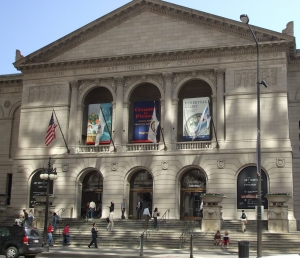
The latest update to Google’s browser-based map service allows visitors to navigate museums across the world with their smartphones. While sprawling institutions made up of various wings and galleries can appear cumbersome, Google hopes to alleviate confusion by making virtual floor plans for dozens of museums and libraries in nine countries available to users.
The recent update includes interior views of shopping malls, airports, train stations, and convention centers, but the presence of museum layouts is particularly welcomed. While 30 museums in the United States are currently mapped out, museums that are not already included can upload their own floor plans if they wish to be included in the project.
Maps of the American Museum of Natural History in New York, the Art Institute in Chicago, the Freer Gallery of Art in Washington, the British Museum in London, the National Museum of Denmark in Copenhagen, and the National Museum of Emerging Science and Innovation in Japan are currently available.
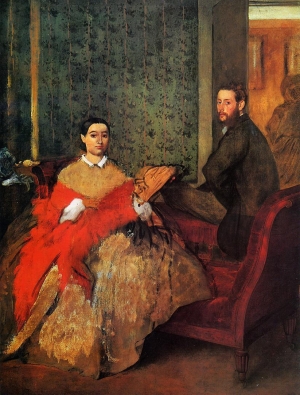
Patrons who are familiar with the permanent collection at Boston’s Museum of Fine Arts might become befuddled upon their next visit to the institution. Some of the museum’s finest works including Pierre-Auguste Renoir’s Dance at Bougival, the pivotal Claude Monet painting, La Japonaise: Camille Monet in a Japanese Costume, five works by Paul Cézanne, five more by Edouard Manet, and two of the masterpieces by Vincent Van Gogh are nowhere to be found.
While some of the works have been lent to museums in the United States, Japan, and Europe to enhance exhibitions, others have been rented to for-profit organizations. Loans between institutions are common practice, but compounded with the large number of works currently out on rent by the MFA, the museum’s own collection appears to be lacking. Currently, 26 of the MFA’s paintings are involved in exhibitions in Italy, which the institution received a hefty yet undisclosed fee for. Some of the works now on view in Italy are two paintings by John Singleton Copley and two Rembrandt portraits as well as single works by Eugène Delacroix, Paolo Veronese, Winslow Homer, John Singer Sargent, Paul Gauguin, Alberto Giacometti, and Pablo Picasso.
While the MFA is excited to be raising revenues, the act of charging fees for lending works has been a source of controversy. One of the main duties of public institutions, including art museums, is to share their collections with the public. Many objectors find the practice of lending works for profit to be in direct opposition to this goal.
Other major holdings that are not presently at the MFA are Diego Velázquez’s Luis de Gongora, two works by El Greco, two more by Gustave Courbet, the museum’s only painting by Edvard Munch, and arguably its greatest work by Edgar Degas, Edmondo and Therese Morbilli. While MFA officials argue that they are bolstering the museum’s international reputation, critics feel the institution is suffering for it.
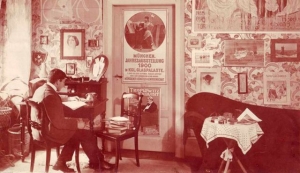
This past March, the highest court in Germany for civil affairs ordered that 4,300 pre-World War II posters looted by Nazis were to be returned to Peter Sachs, a retired airline pilot. Sachs is the son of Hans Sachs, a Jewish dentist who fled Germany in 1938 after being arrested by Nazis and sentenced to the Saschsenhausen concentration camp.
The poster collection, worth more than $5.8 million, was previously kept at The Deutsches Historisches Museum in Berlin. Sachs started his collection in the late 19th century at a young age and went on to publish a poster magazine called Das Plakat, found a society, and give lectures on the subject. Unique works by Henri de Toulouse-Lautrec, Ludwig Hohlwein, Lucian Bernhard, and Jules Cheret are included in the collection.
At the time of its confiscation, Sachs’ collection was the largest of its kind. When the Gestapo seized the posters in 1938, Sachs was told that Propaganda Minister Joseph Goebbels wanted the works for a new museum wing dedicated to “business” art. Sachs’ collection included advertisements for travel destinations and various products as well as propaganda and political posters.
When Sachs arrived in the U.S. with his wife and young son, he assumed that he would never see his collection again. In 1961 he accepted about $50,000 from the West German government, figuring the works had not survived the war. In 1966 when Sachs learned that some of his collection was still intact in East Berlin, he made contact with communist authorities in an attempt to get the posters loaned for exhibitions. He never succeeded.
After Sachs’ death, his son Peter fought a five-year legal battle for the return of his father’s posters after a government panel denied his claim in 2007. The court ultimately ruled that Sachs had never lost legal ownership of the post collection and that Peter, Sachs’ heir, had the right to possession.
Guernsey’s auction house will handle the collections’ sale in three intervals. The first auction is scheduled for January 18, 2013 and the second and third series will take place at six-month intervals. Guernsey’s hopes to find a single buyer for the collection and has been in talks with museums in Germany, Israel, and the U.S.
|
|
|
|
|